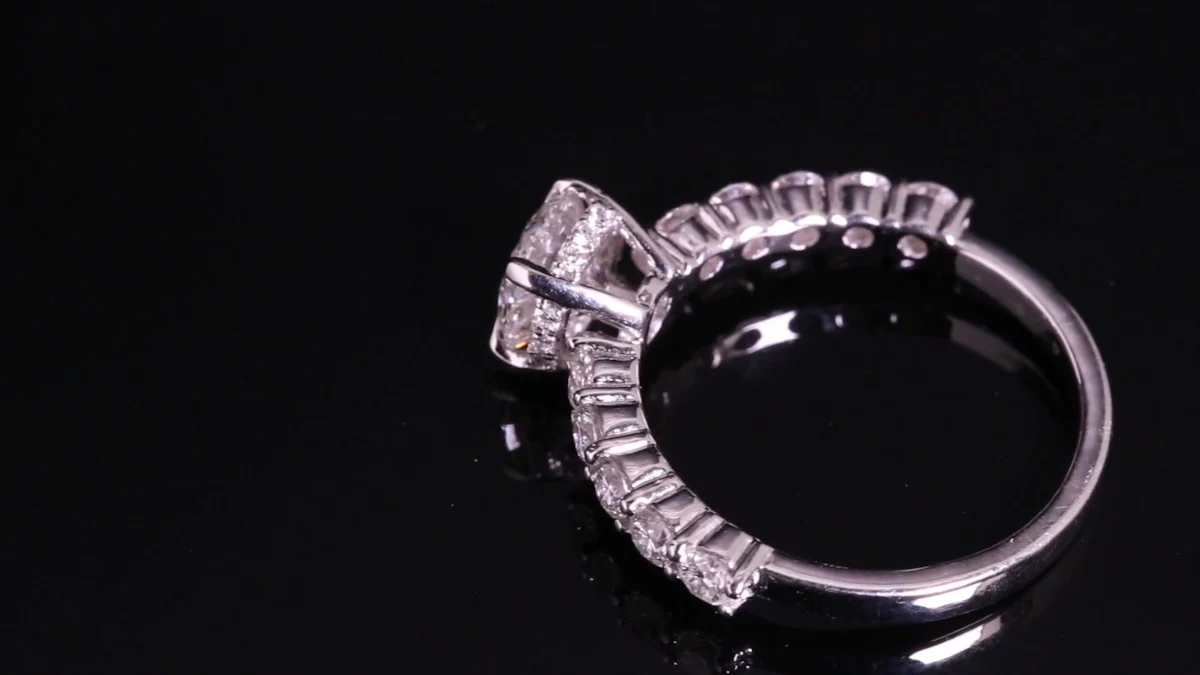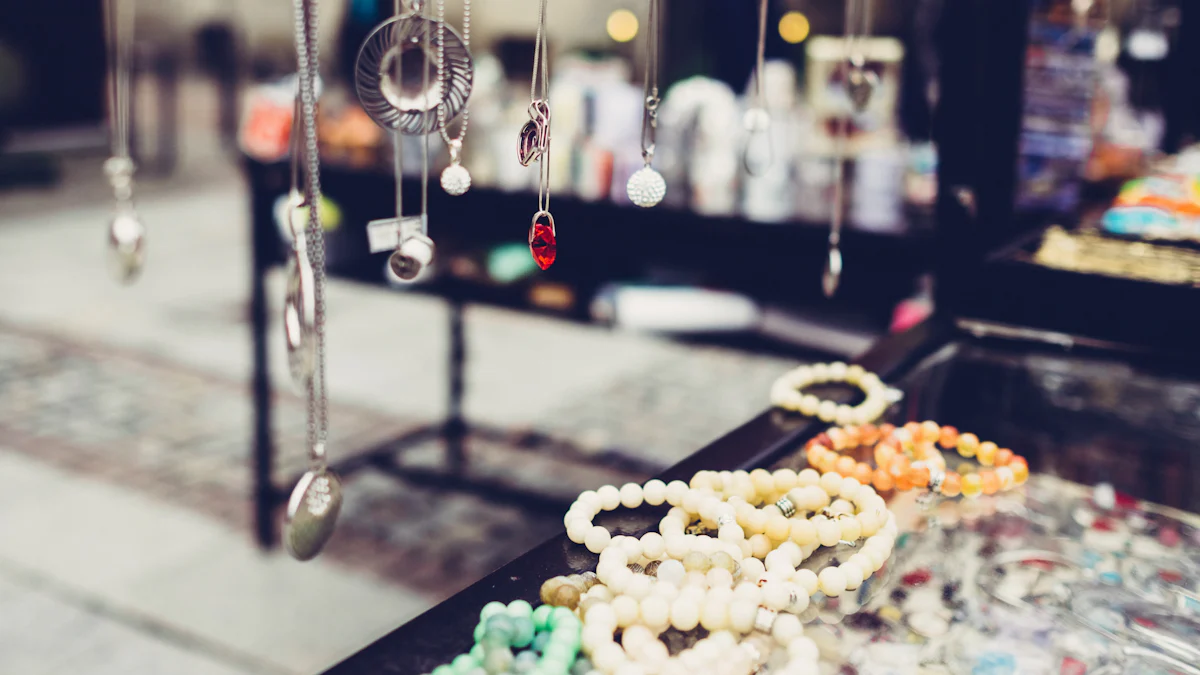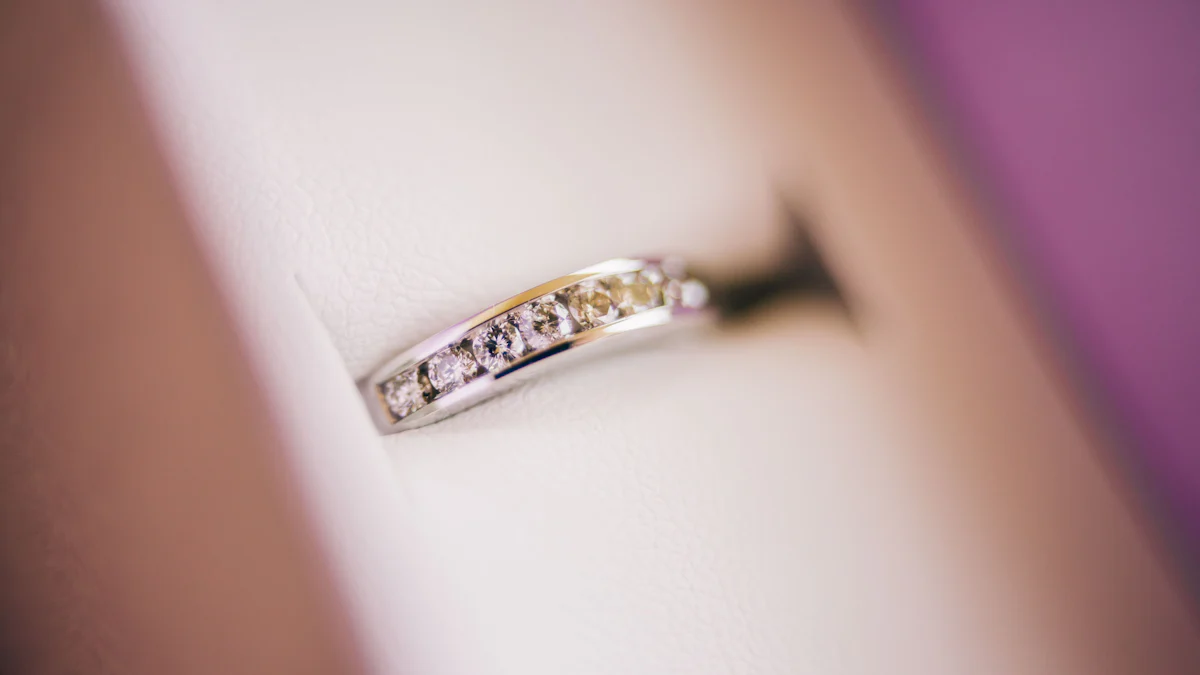Tips for Choosing Diamonds with Minimal Bow Tie Effect

When you're choosing a diamond, you want it to sparkle and shine without any distractions. The bow tie effect can sometimes get in the way of that perfect sparkle. This effect creates a dark area across the center of the diamond, resembling a bow tie, which can significantly impact its appearance and value. A slight bow tie might not matter much, but a pronounced one can lower the diamond's appeal. By understanding how to choose diamonds with minimal bow tie effect, you can make informed decisions that enhance both the beauty and value of your purchase.
Key Takeaways
- Evaluate light performance by checking for even reflection across the diamond to avoid dark spots.
- Choose diamond shapes like round brilliant cuts that are less prone to the bow tie effect.
- Consult with professionals to gain insights on cut quality and symmetry, ensuring a stunning selection.
- Utilize technology and online resources to assess diamonds and identify potential bow tie effects.
- Focus on the diamond's overall appearance rather than just carat weight to maximize value.
- Pay attention to the length-to-width ratio, as balanced proportions can minimize the bow tie effect.
- Inspect diamonds under various lighting conditions to ensure consistent brightness and beauty.
Understanding the Bow Tie Effect

What is the Bow Tie Effect?
The bow tie effect is a phenomenon that can affect the beauty of a diamond. You might notice a dark shadow across the center of the diamond, resembling a bow tie. This shadow occurs because of how light interacts with the diamond's facets. When the facets aren't perfectly aligned, they block light, creating those shadowed areas.
Certain diamond shapes are more prone to this effect. Oval, marquise, and pear-shaped diamonds often show the bow tie effect. These shapes have elongated facets that can stretch light in ways that make it difficult for it to disperse evenly. As a result, you see less sparkle in the center of the diamond.
Why Does the Bow Tie Effect Occur?
Several factors contribute to the bow tie effect. The primary reason is the imbalance in the facet arrangement. When the facets don't align properly, they block light instead of reflecting it. This misalignment creates the shadowy bow tie shape across the diamond's width.
The cut and symmetry of the diamond play crucial roles in this effect. A well-cut diamond with excellent symmetry will reflect light more evenly, minimizing the bow tie effect. If the diamond's cut isn't precise, light won't bounce around as it should, leading to those unwanted dark spots. So, when you're choosing a diamond, pay close attention to its cut quality. A high-quality cut can significantly reduce the bow tie effect, ensuring your diamond sparkles beautifully.
Evaluating Diamonds to Minimize the Bow Tie Effect

Checking for Even Contrast
When you're evaluating a diamond, light performance is crucial. You want a diamond that reflects light evenly across its surface. This even reflection ensures that the diamond sparkles brilliantly without any distracting dark spots. The bow tie effect can disrupt this sparkle by creating uneven contrast.
To check for even contrast, hold the diamond under different lighting conditions. Look at it from various angles. You should see consistent brightness across the diamond. If you notice dark areas, especially in the center, the bow tie effect might be present. A well-cut diamond will show minimal contrast variation, enhancing its overall appearance.
Understanding Diamond Shapes and Cuts
Different diamond shapes exhibit varying degrees of the bow tie effect. *Oval, marquise, and pear-shaped diamonds* are more prone to this phenomenon. However, not all diamonds in these shapes will have a pronounced bow tie. The key lies in the cut quality. A diamond with optimal facet proportions and symmetry will minimize the bow tie effect.
Some shapes, like round brilliant cuts, are less likely to show this effect due to their symmetrical design. When choosing a diamond, consider shapes that naturally reduce the bow tie effect. Remember, a high-quality cut enhances the diamond's appearance, making it more appealing and valuable.
Considering Length-to-Width Ratios
The length-to-width ratio of a diamond significantly impacts its appearance. For elongated shapes like ovals and marquises, this ratio can influence the bow tie effect. Ideal ratios help distribute light evenly, reducing the likelihood of dark spots.
When selecting a diamond, aim for proportions that enhance its look. A balanced length-to-width ratio ensures the diamond appears symmetrical and well-proportioned. This balance not only minimizes the bow tie effect but also maximizes the diamond's visual appeal.
Practical Tips for Selecting Diamonds
Consulting with a Professional
When you're on the hunt for the perfect diamond, consulting with a professional can make a world of difference. Gemologists at Silver Spring Jewelry emphasize the value of expert guidance. They say,
"Trust our seasoned professionals to guide your oval diamond selection with tips that consider the bow-tie effect within the landscape of the diamond’s overall allure and excellence."
Here's why you should consider seeking expert advice:
-
Benefits of Expert Guidance: Professionals have years of experience and a keen eye for detail. They can help you spot potential issues, like the bow tie effect, that you might miss. Their insights ensure you choose a diamond that not only looks stunning but also holds its value.
-
Questions to Ask Jewelers: When you meet with a jeweler, come prepared with questions. Ask about the diamond's cut quality and symmetry. Inquire if the diamond has been evaluated for the bow tie effect. Don't hesitate to request a demonstration of the diamond under different lighting conditions. This will help you see how it performs in various environments.
Utilizing Technology and Tools
In today's digital age, technology offers incredible resources to aid your diamond selection process. Gemologists at Diamond Rensu highlight the importance of using these tools to avoid common pitfalls. They note,
"Avoid the undesirable oval diamond bow tie effect to enhance brilliance and beauty. Opt for expert guidance to select oval diamonds with ideal proportions, ensuring maximum sparkle and eliminating the bow tie effect for a stunning gem."
Here's how you can leverage technology:
-
Online Resources for Diamond Evaluation: Numerous websites provide detailed guides and videos on diamond evaluation. These resources can teach you how to assess a diamond's cut, clarity, and color. They also offer insights into identifying the bow tie effect and understanding its impact on a diamond's appearance.
-
Apps and Tools for Assessing Bow Tie Effect: Several apps allow you to virtually inspect diamonds. These tools simulate how a diamond will look under different lighting conditions, helping you spot any bow tie effect. They also provide information on the diamond's proportions, which is crucial for minimizing unwanted shadows.
By combining expert advice with modern technology, you can confidently select a diamond that dazzles without distractions. Remember, the right diamond should captivate with its brilliance and maintain its allure for years to come.
Minimizing the bow tie effect in diamonds enhances their beauty and value. To make informed choices, remember these key tips:
- Evaluate Light Performance: Ensure even light reflection to avoid dark spots.
- Choose the Right Shape and Cut: Opt for shapes and cuts that naturally reduce the bow tie effect.
- Consult Experts: Seek professional advice for insights on cut quality and symmetry.
Prioritize both appearance and value. A diamond should captivate with its brilliance and maintain its allure. Focus on the overall look rather than carat weight to achieve the best value.
FAQ
What is the Bow Tie Effect in diamonds?
The bow tie effect in diamonds resembles the bow tie worn with a tuxedo. It's an optical phenomenon that appears as a darker, bow-tie-shaped area across the center of a diamond's table, which is the largest facet on top. This effect mainly occurs in diamonds with a longer length-to-width ratio, such as pear, oval, or marquise cuts. The intensity can vary from dark to black areas, a slight shadow, or even being invisible.
How does the bow tie effect affect diamonds?
Most diamonds affected by the bow tie will display the effect to some degree, but it's often unnoticeable. However, this effect isn't included in the overall grade of the stone. Therefore, a thorough visual inspection is crucial. An otherwise expensive stone might display a very apparent bow tie, impacting its sparkle and overall appearance.
Is the bow tie effect ever present in cushion diamonds?
The bow tie effect is a complex issue for diamond buyers, especially when selecting engagement rings or wedding bands. While cushion diamonds are less prone to this effect compared to elongated shapes, it's still essential to inspect each diamond individually to ensure it meets your expectations.
Can the bow tie effect be eliminated?
While you can't completely eliminate the bow tie effect in certain diamond shapes, you can minimize it. Choosing a well-cut diamond with excellent symmetry and proportions can significantly reduce the visibility of the bow tie effect, enhancing the diamond's brilliance and appeal.
Does the bow tie effect impact the value of a diamond?
Yes, the bow tie effect can impact a diamond's value. A pronounced bow tie can detract from the diamond's appearance, making it less desirable. When purchasing a diamond, consider how the bow tie effect influences its overall look and value.
How can I check for the bow tie effect when buying a diamond?
To check for the bow tie effect, hold the diamond under different lighting conditions and view it from various angles. Look for consistent brightness across the diamond. If you notice dark areas, especially in the center, the bow tie effect might be present. Consulting with a professional can also help you identify this effect.
Are there diamond shapes that don't show the bow tie effect?
Round brilliant cuts are less likely to show the bow tie effect due to their symmetrical design. If you're concerned about this effect, consider choosing diamond shapes that naturally reduce its visibility, ensuring a more brilliant and appealing stone.
See Also
A Comprehensive Look at Engagement Ring Diamond Cuts
Diving Into Various Styles of Diamond Wedding Rings
Your Ultimate Guide to Selecting a White Diamond Ring

